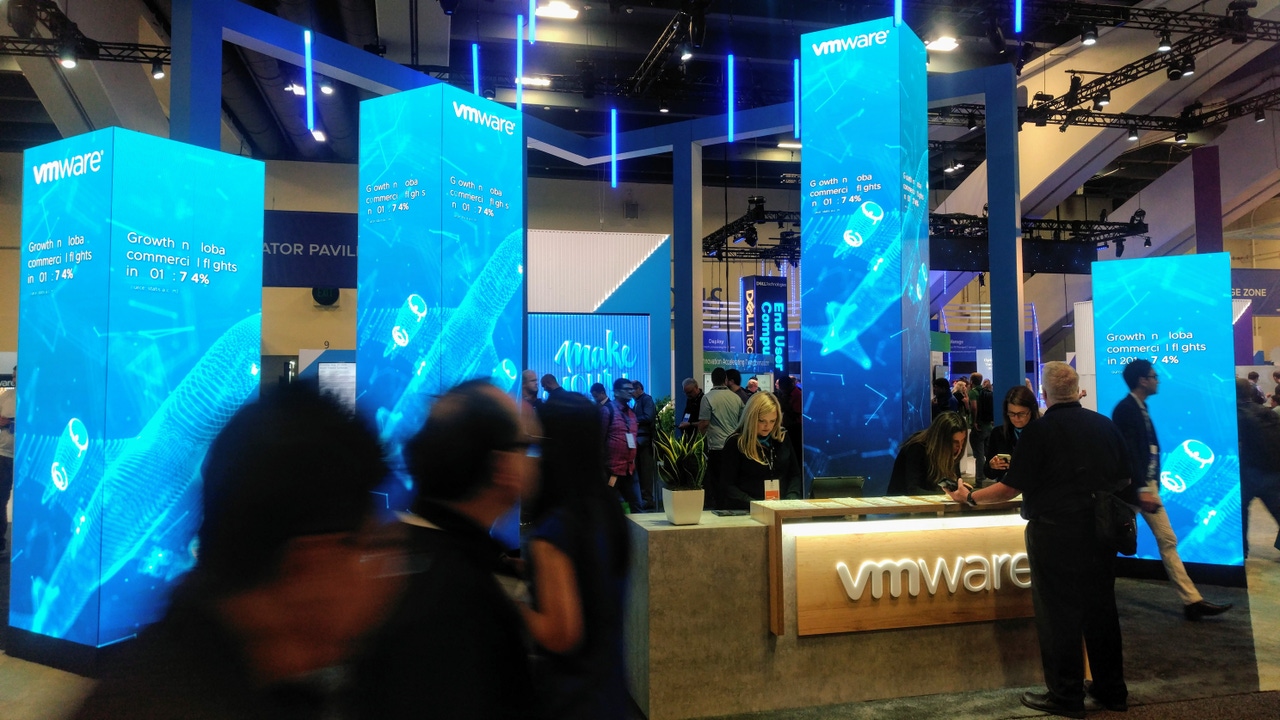VMware’s Craig McLuckie: Kubernetes Needn’t Be Too Disruptive
It may be a new world for many, but, argues Kubernetes’ co-creator, organizations can take their time getting there.

In an announcement this week, the rebranding of Pivotal’s cloud-native application platform line is complete, and Tanzu becomes VMware’s own Kubernetes. It’s the final transformation in a process that began in November 2018, when VMware purchased a startup firm named Heptio. That firm’s original intent was to build a full-scale commercial product line around Kubernetes, the container orchestration system Heptio’s then-CEO Craig McLuckie had a hand in creating when he was an engineer at Google.
It was a confusing sequence of events for those who attempted to follow Kubernetes developments closely: Pivotal, a company spun off from EMC and later absorbed back into Dell EMC, became VMware’s sister company. It had been the caretaker of the open source application platform Cloud Foundry but later reworked some of the deployment tools originally built for CF to fit Kubernetes. Pivotal Container Service (which became PKS with the addition of Kubernetes support) was the culmination of that platform, in conjunction with Google Cloud. But then VMware repackaged PKS under its own brand name, well before VMware re-absorbed Pivotal back into its own company, reworking its project into what’s now being called Tanzu.
“I think there were a number of things that PKS got right from the get-go,” McLuckie, now VP of R&D for VMware’s Modern Apps Platform, said in an interview with DCK. “The recognition that the way you tend to consume Kubernetes is through… an interface. There is no one way to organize Kubernetes. Some teams want to use multi-tenant environments; some teams want to allocate Kubernetes clusters for specific workloads. I think the work we’ve done over the past number of years to operationalize Kubernetes through PKS, there were some instinctive decisions that were correct.”
As of this week, the product formerly known as VMware Enterprise PKS has been rebranded as Tanzu Kubernetes Grid Integrated Edition, beginning with version 1.7. Tanzu Kubernetes Grid is now VMware’s own Kubernetes platform and is being shipped with vSphere 7. One of its objectives is to make the command line-driven deployment for Kubernetes clusters — historically viewed as foreign to VMware — available for operators managing vSphere 7 environments.
Tension Relief
Another objective is to replace the ticket-driven metaphor for systems management with an API-driven metaphor, McLuckie said. The former is the product of IT operations. The latter is the offspring of software developers. When McLuckie first started pitching this API idea back at Heptio, his audience consisted of software developers and others who had already adopted the GitHub methodology.
Yet here he is now at VMware, the nexus of most of the IT operations world’s activity, where infrastructure adjustments are handled through tickets. If PKS didn’t clearly bridge Dev and Ops after three years, how far along can we expect Tanzu to get?
“The one does not necessarily preclude the other,” responded McLuckie. “The last thing we want to do is en masse move into the Wild West, where a lot of the systems that teams put in place to ensure they’re not compromised and that their governance or special compliance postures are preserved, disappear.
“There’s a tension that exists between lines of business and centralized IT organizations,” he continued. “Lines of business are under incredible duress to go faster. They need to be able to deliver these digital experiences quicker.”
For instance, an established financial services organization may become challenged by a new firm that isn’t besieged with old technology (and old golden masters) it’s obliged to carry forward into the future. It’s this pressure that McLuckie believes is responsible for much of the “shadow IT” trend, where each line of business builds its own curious abstraction atop the older, deeper layers of infrastructure.
“Everything’s great until the first audit happens. And you discover, oh my goodness! You took these relatively secure, ticket-driven, human-audited systems, and you laid all these other things on top of it. Now we’re out of compliance. That tension exists, and it’s very real.
“What we’re trying to do is not disrupt or completely displace the roles of those individuals,” McLuckie continued. “What we’re looking to do is provide them the set of superpowers they need to preserve those practices and processes – but remove toil.”
The DevOps movement in organizations does tend to yield benefits early on, again, until that first audit. That’s when their chief strategy officers take it upon themselves to impose centralized policies.
Kubernetes adds an entirely new set of policy dials to this centralization process, McLuckie said. “Right now, as long as that abstraction is in the domain of line-of-business teams, there’s no practical way to centralize those things… What you’re going to see is Kubernetes showing up as that new abstraction. It enables the elegant centralization of things like policy controls while still presenting those line-of-business teams with high levels of optionality.”
Before he worked at VMware, McLuckie recalled, he worked in an environment where he felt he was writing businesses “letters from the future” — pleas for them to relocate to a different century. Now he feels compelled to stop using the phrase “legacy applications,” replacing it with “heritage.” And he finds himself happy to provide the tools he created back in the future to a present-day organization that’s accustomed to doing things a particular way.
“It may be that you have to go quickly because the business is demanding it. But at least you have a practical path to deliver that. You don’t have to disrupt everything. You don’t have to reshape the organization to make use of these new technologies.”
About the Author(s)
You May Also Like





.jpg?width=700&auto=webp&quality=80&disable=upscale)



